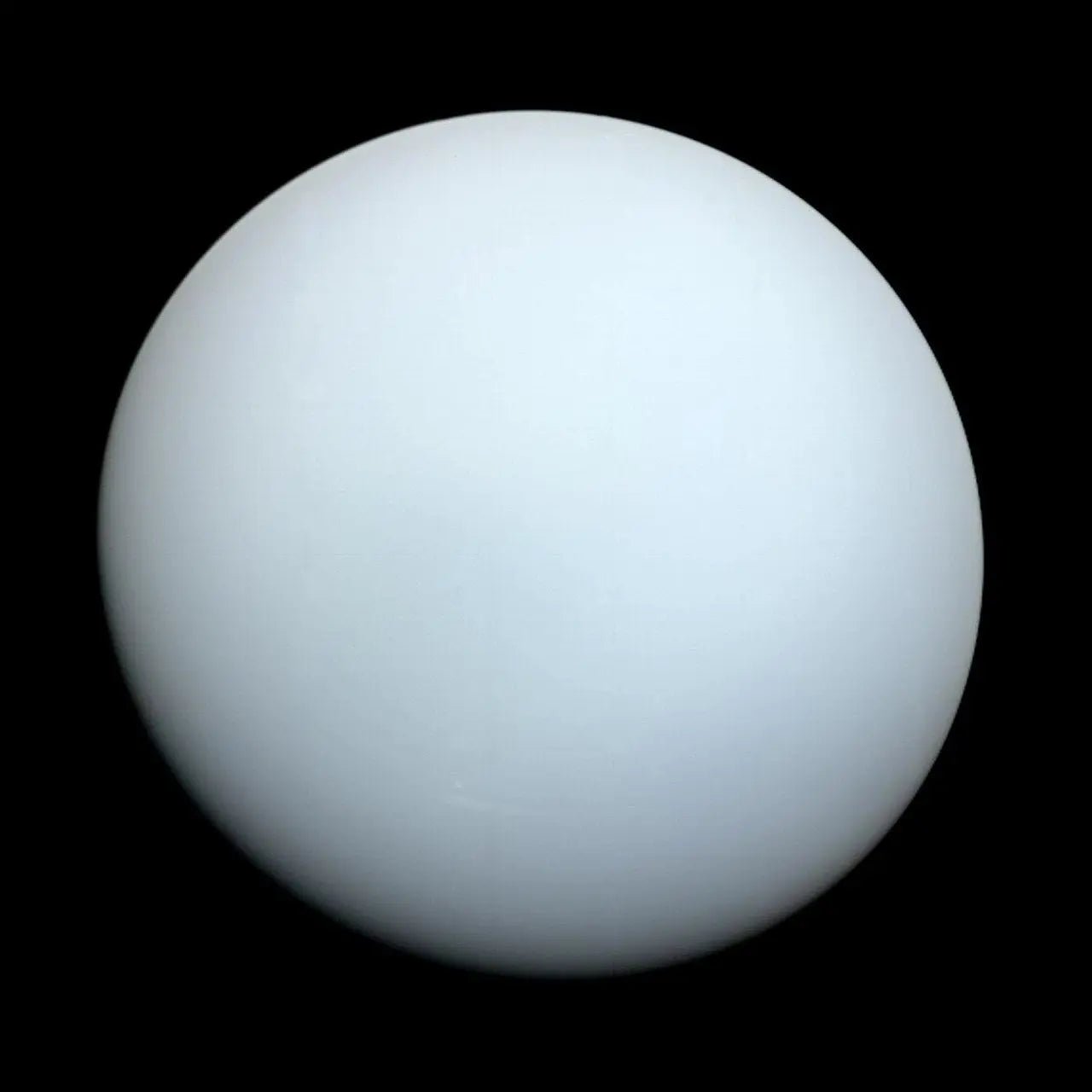Introduction
Uranus, the seventh planet from the Sun, has long been an enigma in our solar system. Often overshadowed by its more famous neighbors like Saturn and Jupiter, Uranus is a world of icy mystery that has fascinated astronomers and space enthusiasts alike. This article aims to shed light on the unique characteristics of Uranus, from its peculiar axial tilt to its complex ring system and its potential for future exploration.
A Tilted World
One of the most striking features of Uranus is its extreme axial tilt, which is approximately 98 degrees. Unlike other planets that rotate like spinning tops, Uranus rolls along its orbital path, almost as if it were lying on its side. This unique orientation is thought to be the result of a cataclysmic collision with another celestial body early in its history. The tilt has significant implications for the planet's seasons, which last for about 21 Earth years each. During its long summer and winter, one pole remains in constant sunlight while the other is shrouded in darkness.
A Pale Blue Dot
Uranus is often described as a "pale blue dot" due to its icy atmosphere composed mainly of hydrogen, helium, and a small amount of methane. The methane absorbs red light and reflects blue and green wavelengths, giving the planet its distinctive color. The atmosphere also contains complex cloud structures and occasional storms, although they are not as prominent as those found on Jupiter and Saturn.
The Ring System
While Saturn's rings are the most famous in the solar system, Uranus also boasts a complex ring system. Discovered in 1977, the rings of Uranus are narrow and dark, composed of ice and rock particles. There are currently 13 known rings, and they are thought to be relatively young, possibly formed from the remnants of a shattered moon. These rings are unique in that they are not easily visible and were only discovered through careful observation and technological advancements.
Moons and Magnetosphere
Uranus has 27 known moons, named after characters from the works of William Shakespeare and Alexander Pope. The largest of these, Titania and Oberon, were discovered by William Herschel in 1787. These moons are icy bodies with geological activity, and they may harbor subsurface oceans. Uranus also has an unusual magnetosphere, with its magnetic field tilted at a 60-degree angle to its axis of rotation. This results in a complex and twisted magnetic field that is not yet fully understood.
Future Exploration
The only spacecraft to have visited Uranus is Voyager 2, which flew by the planet in 1986. Since then, there have been discussions about sending another mission to study the planet more closely. A Uranus orbiter could provide invaluable data on the planet's composition, ring system, and moons, potentially revolutionizing our understanding of this enigmatic world.
Conclusion
Uranus is a planet that challenges our understanding of planetary science. Its extreme tilt, icy atmosphere, complex ring system, and mysterious moons make it a subject of ongoing study and fascination. As technology advances, the prospects for future missions to Uranus become more feasible, and the ice giant continues to beckon us with its mysteries. It serves as a reminder that even in our own solar system, there are still worlds that hold secrets waiting to be discovered.
With its unique characteristics and the potential for future exploration, Uranus remains one of the most intriguing and least understood planets in our solar system. As we continue to peer into the cosmos, the ice giant calls out for further study, promising new discoveries and insights into the workings of our celestial neighborhood.


Share:
The Precession of the Equinoxes
Total Solar Eclipses and Annular Solar Eclipses